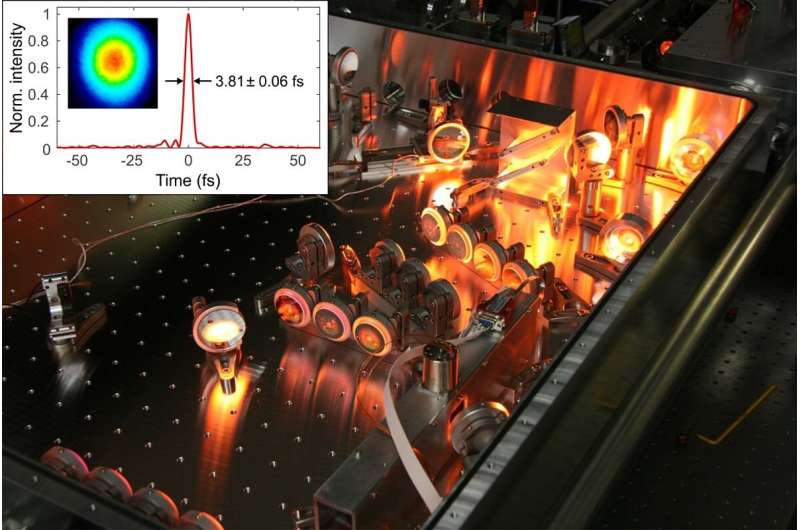New compressor delivers above-terawatt 1.5-cycle pulses at kilohertz repetition rate

Researchers at the Max Born Institute for Nonlinear Optics and Short Pulse Spectroscopy (MBI) have reached a new milestone in few-cycle pulse generation, breaking a 10-year-old record and achieving 1.5-optical-cycle-long laser pulses with 1.2 terawatt peak power by a new high-energy hollow fiber compressor beamline. The intense pulses will be used to generate intense attosecond harmonic radiation for nonlinear XUV spectroscopy studies.
In order to shed light on complex charge transfer mechanisms during the formation of a chemical bond or in biologically relevant processes, one needs tools with exceptional temporal resolution in the attosecond (10-18 s) realm. Single attosecond light pulses can be generated in the extreme ultraviolet (XUV) spectral range by focusing intense few-cycle laser pulses encompassing only a few oscillations of the electric field onto noble gas atoms, using the process called high-harmonic generation (HHG). However, the conversion efficiency is low, yielding very weak attosecond pulses, insufficient for nonlinear spectroscopic applications. In order to create more intense isolated attosecond pulses, high-energy, near infrared, few-cycle driving laser pulses are required.
Now, researchers at the MBI have made a big step forward in the energy scaling of the driver pulses. The group succeeded to spectrally broaden and subsequently compress pulses of a titanium sapphire laser, which emits at a wavelength of 790 nm, to 3.8 fs duration (1.5 optical cycles) at an energy of 6.1 mJ, which is unprecedented at kilohertz repetition rate. Thus the peak power of the pulses exceeds the terawatt (> 1012 W) level. This result breaks a 10-year-old record achieved at RIKEN.
In order to achieve these results, a new 8.2 meter long compressor beamline was built around a 3.75 meter long, stretched flexible hollow-core fiber (SF-HCF) where spectral broadening took place as a result of nonlinear interaction between the intense light pulses and helium atoms admitted into the capillary. The spectrally broadened pulses were then compressed by a set of chirped mirrors and characterized by an in-line dispersion scan device that was directly placed into the vacuum beamline that is constructed for subsequent high-harmonic generation and XUV experiments. The new HCF compressor is an up-scaled version of a device that was recently developed in the framework of an international collaboration with participation of the MBI.
More information: Tamas Nagy et al, Generation of above-terawatt 15-cycle visible pulses at 1 kHz by post-compression in a hollow fiber, Optics Letters (2020). DOI: 10.1364/OL.395830
Journal information: Optics Letters
Provided by Forschungsverbund Berlin e.V. (FVB)





















